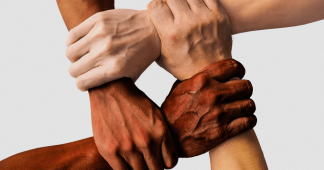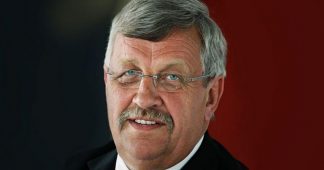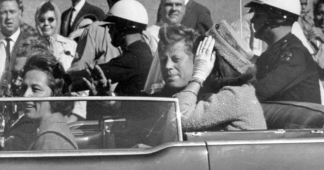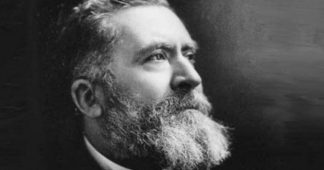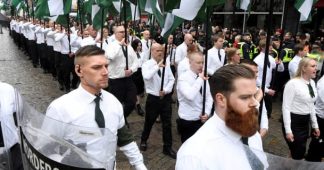By Jordan Shilton
13 June 2020
Sweden’s official investigation into the 1986 assassination of Prime Minister Olof Palme was formally concluded Wednesday with the identification of Stig Engström as the killer.
The announcement settles none of the many unanswered questions about the first assassination of a European head of government in the post-war era. The conclusion of the inquiry instead underlines the determination of powerful political forces to continue the decades-long cover-up surrounding Palme’s murder.
Wednesday’s announcement was preceded by an unprecedented media campaign claiming that the truth was nigh. Aftonbladet, Sweden’s largest daily tabloid, described the day as “historic” while almost every major bourgeois newspaper around the world carried reports on the upcoming press conference.
When chief investigator Krister Peterson delivered his concluding 90-minute statement to the assembled journalists via a video conference, no new information was presented. Engström, who reportedly committed suicide almost two decades ago, was presented as the assassin on the basis of him being in the area at the time, having had access to the suspected weapon used, and having received firearms training in the Swedish military–evidence that has been in the public domain for years. While Peterson claimed that Engström probably acted alone, he acknowledged that the possibility could not be ruled out that he was part of a wider plot. But no indication as to who may have been involved in such a plot was provided.
Palme was shot from behind by a gunman on the evening of February 28, 1986, as he returned home from a cinema with his wife, Lisbet. The murder weapon was never recovered, but the two .357 Magnum bullets fired were said by police to be capable of piercing bulletproof vests, making it likely that professional killers were involved.
Remarkably, even though the prime minister was shot dead on Sveavägen, one of central Stockholm’s busiest streets, the assassin was able to flee the scene and remain undetected.
The actions of the police and security forces on the day of Palme’s assassination were highly suspect. Lisbet told authorities that she had tried to arrange a bodyguard for her and her husband for the trip to the cinema but could not get a hold of anyone. Although media accounts of Palme’s killing invariably cite the claim that he often appeared without a bodyguard, Joakim, his son, told German news magazine Der Spiegel in an interview published Thursday that his father was extremely conscious of the threat to his security. At meetings of the Socialist International, Palme frequently met politicians from Latin American countries who were assassinated soon afterwards, Joakim recalled. He was “very disturbed” by this and spoke often at home about his concern for his own safety.
After the murder, the police failed to properly seal off the crime scene, allowing passers-by to contaminate potentially crucial evidence, like the footprints of the perpetrator. No lockdown or transport restrictions were imposed in the Stockholm area in the early hours of March 1. Despite a protocol being in place for the police to search central Stockholm street by street in an emergency situation it was not activated.
Who was Olof Palme?
Aged 59 at the time of his death, Palme had served as prime minister for 11 years. He was on the left wing of the powerful Social Democratic Party, which had ruled the country continuously for 37 years when Palme took over as head of government in 1969. He remained prime minister until 1976, when the Social Democrats lost power to a right-wing coalition. But after six years as leader of the opposition, he returned as prime minister following the Social Democrats’ 1982 election victory.
Palme was a significant political figure domestically and internationally. Born into an aristocratic family, he joined the Social Democrats in 1950 and rose quickly through the ranks. In keeping with the outlook of the Social Democrats and broad sections of the Swedish bourgeoisie in the post-war period, Palme sought to maintain a compromise between capital and the working class based on a steady guarantee of profits for big business and relatively generous wages for workers–the so-called “Swedish model.”
This arrangement, which had been codified in the 1938 Saltsjöbaden agreement and rested on the avoidance of strikes, was coming under increased pressure by the late 1960s. Sweden’s major industrial and manufacturing sectors, which came through the Second World War largely unscathed due to Swedish neutrality, had seized the advantage they enjoyed over their European competitors to export substantial quantities of raw materials and engineering goods to support European reconstruction. By the late 1960s, the rapid post-war economic growth based on the largesse of American imperialism was coming to an end. The working class was becoming increasingly militant, launching a series of strikes and protest movements for wage increases and social improvements.
During his first period as prime minister, Palme responded by expanding social programmes for workers, including childcare and universal health insurance to block the emergence of a more radical challenge from below to the capitalist system. He combined this domestic policy with strong public opposition to some of US imperialism’s worst crimes. Palme marched in an anti-Vietnam war demonstration in Stockholm with North Vietnam’s ambassador to Moscow in 1968. After he became prime minister, he compared the US bombardment of Hanoi to the crimes of Hitler.
Notwithstanding this public posture, which enabled Swedish capitalism to occupy a disproportionately prominent role on the world stage as a supposed “humanitarian superpower,” Sweden remained a close ally of US imperialism and the NATO alliance throughout the Cold War. Documents released by WikiLeaks revealed that Sweden was critical in facilitating US spying on the Soviet Union.
Nonetheless, Palme’s public pronouncements and activities won him powerful enemies, not least the CIA and US-aligned regimes. Palme lent open support for the African National Congress against the racist South African Apartheid regime, which was seen by Washington as a bulwark against “communism.” At times he also clashed openly with US imperialist policy, such as when he endeavoured under the auspices of the United Nations to mediate an end to the Iran-Iraq war in 1981-82.
Exposing the bankruptcy of Social Democracy’s conviction that class differences could be softened through compromise, Palme’s policies also made him a hate figure of the right at home. Although the Social Democrats and the trade unions never challenged capitalism and were always focused on protecting the profit interests of the large, export-oriented industrial and manufacturing corporations within the framework of the “Swedish model,” critics felt he went too far in making concessions to the militant working class in the early 1970s.
Conservative and far-right circles even accused him of being a KGB agent, for which no evidence existed. An indication of the tense political atmosphere of the times was that Contra, a popular right-wing magazine, distributed dartboards with a caricature of Palme’s face emblazoned on them.
By 1986, it could be legitimately said that Palme was a wanted man. He had just been elected to a second term in office after bitter denunciations from the right over his failure to escalate a dispute with the Soviet Union, following the alleged incursion of Soviet submarines into Swedish waters. He was also implicated after his death in a major arms scandal involving the sale of $1.3 billion worth of arms from Bofors, Sweden’s largest arms exporter, to the Indian government.
The claim that the police and security agencies botched the investigation into Palme’s assassination through a combination of unintended but no less disastrous mistakes and ineptitude is not credible. Rather, ruling elites and sections of the national security establishments in Sweden, across Europe, and internationally were determined to cover up and conceal the truth about Palme’s death. No small number of elements within the police and state apparatus positively revelled in Palme’s elimination. Claes Löfgren, a journalist with public broadcaster SVT, told the Guardian in 2019 that some people eating in the restaurant he attended on the night of Palme’s death gave toasts in celebration when the news reached them.
The official investigation: catalogue of a cover-up
The way in which the official investigation was conducted from the outset was aimed at concealing what happened, rather than getting to the truth. The likelihood that far-right domestic forces were involved was never seriously probed, a fact that is hardly surprising given how rife far-right forces in the Swedish police were. Contemporary reports speak of champagne parties held by police officers following Palme’s death. Hans Holmér, the first lead investigator to take on the case with the approval of the Social Democratic government, was head of a group of plainclothes policemen known as the Baseball Gang that expressed support for Nazi ideology and beat up opponents in Stockholm.
Efforts to divert the investigation also enjoyed political support. Even after Holmér’s initial investigation, which quickly targeted the Kurdistan Workers Party (PKK), was thoroughly discredited, forcing him to leave his post, he was given support as a private citizen by Social Democrat Justice Minister Anna-Greta Leijon to pursue the inquiry with illegal methods, including the use of wiretapping technology.
Holmér’s convenient fixation on the PKK, which led to the arrest of dozens of Kurds in early 1987 without any evidence found, prevented a serious examination of the crime scene and those involved. The murder weapon was never found. Engström, now identified as the assassin, was allowed to pose as a key witness, claiming that he had come to Palme’s aid immediately after the shooting before running off to fetch the police. Even when questions were asked about Engström, known since as “Skandia Man” because he worked for the nearby Skandia insurance firm, he was able to make a staged appearance on public television at the scene of the crime declaring his innocence.
After the PKK leads collapsed and Holmér’s illegal activities were exposed, forcing the resignation of Leijon, the authorities turned their attention to Krister Petterson, a drug addict and petty criminal who was in the area on the night of Palme’s death. Petterson was presented to Lisbet Palme in a line-up with other suspects. After she identified him as being the shooter, he was put on trial and convicted. However, it quickly became clear that the police gave Lisbet a tip-off prior to the identification process, telling her that one of the suspects was an alcoholic and drug addict. Only Petterson looked the part. Since her testimony was the only basis to suspect Petterson, an appeals court threw out the conviction in 1989.
The official investigation subsequently went nowhere, even though over 10,000 people were questioned and a vast mountain of evidence was gathered. Engström died in 2000 without ever being seriously questioned, including about his ties to far-right groups and an arms collector who could have supplied him with the murder weapon.
No progress was ever made on credible indications that the intelligence agencies of the South African Apartheid regime may have carried out, or at least planned Palme’s death. Colonel Eugene de Kock, a senior figure in South Africa’s security forces, testified to a 1996 Supreme Court hearing that Craig Williamson, a notorious spy, murdered Palme due to his support for the ANC. Somewhat later, Swedish diplomat Goran Björkdahl uncovered further evidence linking Apartheid-era security forces to the assassination, including a statement by General Chris Thirion in 2015 that he believed Pretoria had a hand in the killing. This led in March this year to a meeting between South African and Swedish officials at which a dossier on the case was handed over, Björkdahl reported Monday in the Guardian. None of its details were made public.
There can be no doubt that if South Africa was involved in the killing, the go-ahead would have come from Washington. And if this line of inquiry was rejected, it was certainly not out of fear of exposing the thuggery and criminality of the long-departed Apartheid regime, which is widely known. US imperialism under Reagan enjoyed close ties with the Apartheid regime’s security apparatus, seeing it both as a bulwark against “communism” and a useful ally in the disruption and suppression of left nationalist movements aligned with the Soviet Union in Africa. In 1981, Reagan declared that the Apartheid regime had “stood beside us in every war we’ve ever fought” and was “strategically… essential to the free world in its production of minerals.” Together with the Thatcher government in Britain, the Reagan administration sought to block sanctions on South Africa and provided crucial support to keep the regime intact during its dying days.
The CIA’s intimate ties with South African intelligence went back even further. It was the CIA which tipped off Apartheid authorities to the whereabouts of Nelson Mandela in 1962, leading to his arrest and 27-year imprisonment. During the 1980s, the CIA extensively shared classified intelligence with the South African Defence Forces and Bureau of State Security (BOSS), including critical information to help South Africa intervene into Angola’s bloody civil war.
The contemporary significance of Palme’s assassination
Two weeks after Palme’s assassination, the Bulletin, one of the forerunner publications of the World Socialist Web Site, drew the political lessons of the first assassination of a European head of government in the post-war era:
“For all the claims that the long period of reformist rule has created a permanent democratic consensus, a more ‘civilized’ Swedish model of society, the assassination of Palme reveals that Sweden remains a class-divided society in which the social tensions can erupt in the most explosive and brutal way,” noted a March 14, 1986 Bulletin editorial. “What is true of Sweden is true throughout Western Europe. A week after Palme’s assassination, a young campaign worker for the French Socialist Party was gunned down by a military supporter of the French fascist National Front—which went on to take 10% of the vote in its first parliamentary election. Under the impact of the world economic and political crisis of capitalism, all the shibboleths and myths of ‘democracy’ and peaceful reform which have dominated in Western Europe since the end of the Second World War, are being exposed.”
What was true in 1986 applies with far greater force today. The intervening 34 years have witnessed a vast intensification of social inequality across Europe, an eruption of militarism and war over the past three decades, the hollowing out of democratic structures of rule, and the sharp shift of bourgeois politics to the right. Targeted assassinations are no longer exceptional events but were institutionalized by US imperialism under the Obama administration. Far-right militant groups no longer operate in the shadowy underground but are sitting in parliaments and governments across the continent. Their reactionary pronouncements have become an integral part of bourgeois politics.
In Germany, for example, a vast network of fascistic forces with deep ties to the intelligence services, the military, and the police has drawn up kill lists of left-wing opponents to be eliminated on a “Day X.” The official secret service, the Verfassungsschutz, had intimate ties with the neo-Nazi terrorist group National Socialist Underground which carried out 10 murders across Germany. The Verfassungsschutz has defined any political organisation that calls into question the capitalist profit system as “left-wing extremist” and anti-constitutional. On this basis, it has placed the Sozialistische Gleichheitspartei, the German section of the International Committee of the Fourth International, on a state surveillance watch list.
In France, François Hollande, the predecessor of current President Emmanuel Macron, established an official policy of targeted assassinations, which has to date been utilized in neo-colonial occupations in Africa. Macron hails Nazi collaborator Philippe Petain as a national hero and ordered a ruthless police crackdown against Yellow Vest protesters that resulted in many losing eyes, hands, and fingers. The weeks and days leading up to Wednesday’s closure of the Palme case were dominated by reports from the US and other countries around the world of brutal police violence against peaceful protesters against the police murder of George Floyd that led to deaths and many serious injuries.
Sweden is no exception to this process. The far-right Sweden Democrats, an anti-immigrant fascist party, has been consciously built up and given succour by the right-wing policies of all the major parties. It is now considered a potential coalition partner for the conservative Moderates.
Swedish society is riven by levels of inequality that are unprecedented in the post-war era, while the temporary reforms introduced by Palme and his predecessors have long been largely rolled back. The ruling class’ contempt for the lives of working people finds expression in its criminal “herd immunity” policy in response to the coronavirus, which has produced extremely high infection and death rates.
Even after the passage of more than three decades, the capitalist state cannot provide an honest accounting of Palme’s death. Revealing the possible involvement of right-wing extremists or even spy agencies with ties to US imperialism in the political murder of a sitting prime minister would tread on too many toes in ruling circles. Moreover, it could serve as the catalyst for the eruption of mass opposition among a working population already seething with anger over declining standards of living, police repression, and unending wars.
The cover-up of the assassination of Olof Palme must serve as a warning to the working class. It underscores the ruthless methods the ruling elite in every country will deploy against anyone who cuts across their interests. If this was how they dealt with someone who was “one of their own,” a left Social Democrat reformer, the treatment they will mete out to working class opponents of inequality, militarism, authoritarian forms of rule, and war will be savage.
